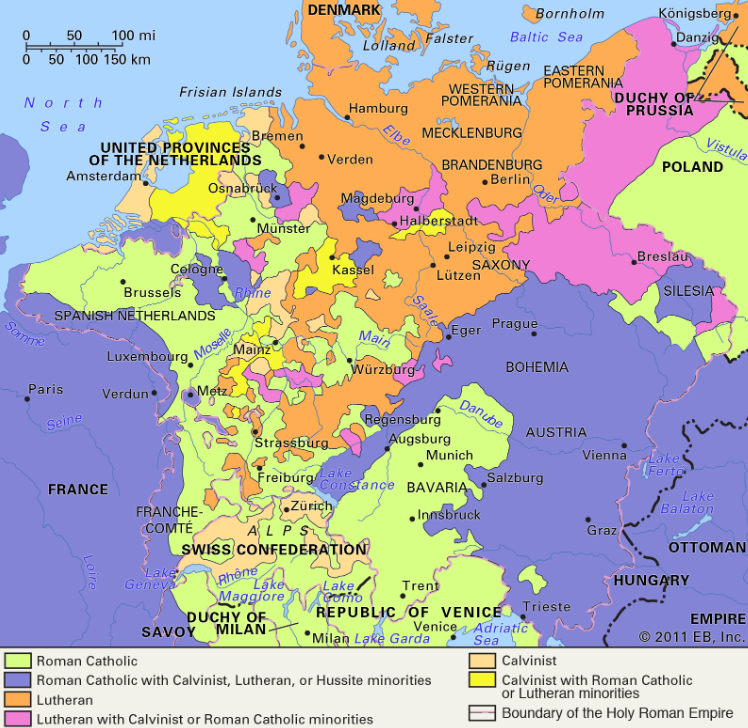What happened?
- The Thirty Years’ War, which raged from 1618 to 1648 in Central Europe, began as a religious conflict between Catholics and Protestants (see map below for distribution of various religious groups in Europe). As the war dragged on, it became less about religion and more about control of Europe. It was one of the most devastating wars in human history, with 8 million deaths from the fighting itself, as well as the famine and disease that resulted from it.
- The Thirty Years’ War became just one event during what was called the “General Crisis” – a period of economic downturn, social unrest, disease, famine and war in the mid- to late 17th century.

Map of central Europe in 1650 depicting the complex distribution of different religious groups after the Thirty Years’ War (from Encyclopaedia Britannica).
How is this related to climate?
- The Little Ice Age, a period of widespread cooling and an average drop in global temperatures from around 1300 to 1850, led to a decrease in agricultural productivity, inflating grain prices. Because most of Europe was an agricultural society at the time, this meant that the economy suffered. The economic downturn led to social, political and economic strife that contributed to the outbreak of war across Europe.
- The Thirty Years’ War coincided with the harshest period of the Little Ice Age, from 1560 to 1660.
References and additional resources
- Handwerk, B. “Little Ice Age Shrank Europeans, Sparked Wars.” National Geographic. 2011. www.nationalgeographic.com/news/2011/10/111003-science-climate-change-little-ice-age/.
- History.com Editors. “Thirty Years’ War.” History. 2009. www.history.com/topics/reformation/thirty-years-war.
- Reardon, S. “Climate Shifts Sparked 17th-Century Conflicts.” Wired. 2017. www.wired.com/2011/10/climate-change-war/.
